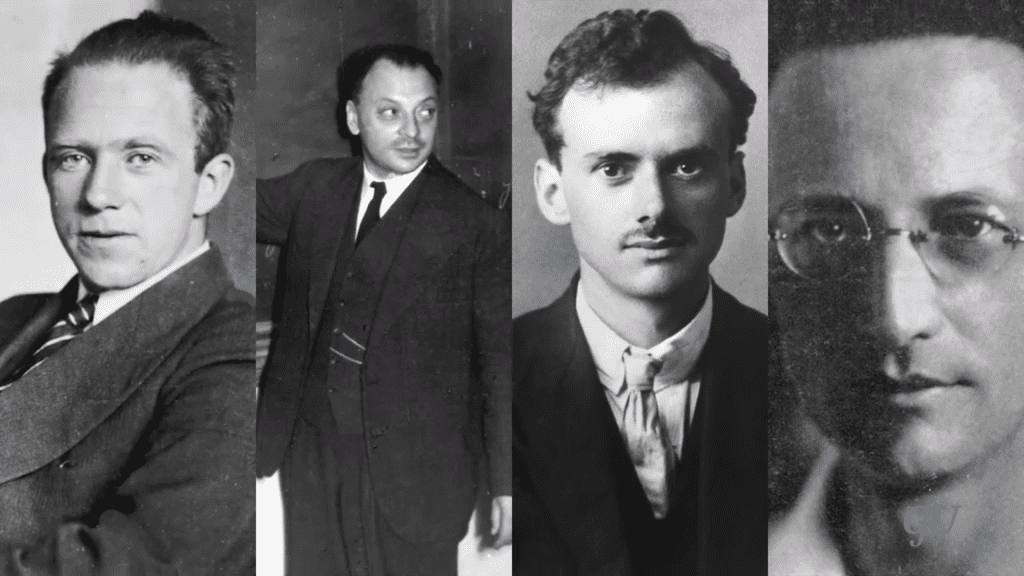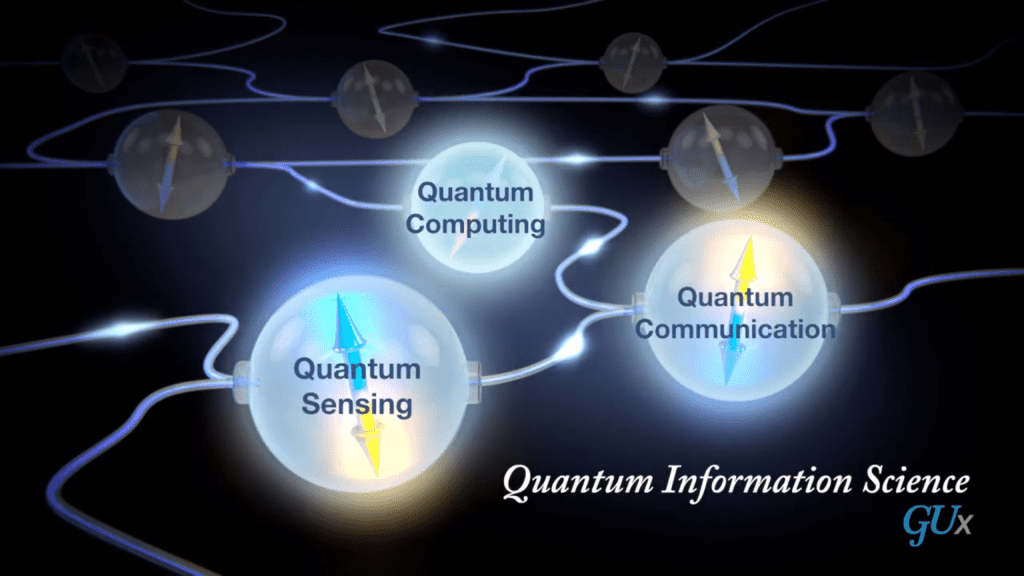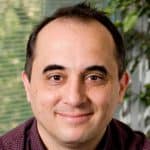In-depth Review of Georgetown’s Quantum Mechanics Course
A comprehensive quantum mechanics course with an engaging instructor and a concepts-first approach.

Quantum theory and Einstein’s general theory of relativity are the two great fundamental theories of contemporary physics. Between them they provide the conceptual framework and the mathematical language in which we express all other theories in physics, and they provide the basic principles to which all known laws of nature conform. [1]
The first quantum revolution spanned from about 1920 to 1980 and led to marvelous technological developments such as computers, lasers and the standard model of particle physics. The original developers of quantum mechanics focused on understanding and applying quantum phenomena and in the process developed new ways of capturing accurate predictions of puzzling physical phenomena through their calculations [2].
Quantum Information Science and Technology (QIST)
A new generation of quantum devices is now being imagined and realized, in which states of individual quantum objects (e.g., atoms, electrons, photons) are controlled and manipulated in ways only dreamed of in previous decades [3]. Quantum technology exploits the unique quantum features of superposition, entanglement (and interference) as well as fundamental metrology metrics in order to create new opportunities in secure communication, high-precision sensing, and revolutionary computers. Worldwide, there is growing excitement, investment, and competition in the area of quantum information science and technology (QIST).
QIST is a new field whose potential implications are very broad: quantum technology may eventually underlie a whole new technological infrastructure much as the semiconductor revolution changed everything in the second half of the last century. As a result, a new technological ecosystem is being shaped by massive public and private investment in North America, Asia and Europe. With this growth there has been a steady demand for QIST talent. QIST is interdisciplinary and spans physics, computer science, mathematics, engineering, chemistry, and materials science. Universities are ramping up efforts and, in cooperation with industry, new workforce initiatives [4] [5] [6] are being tailored to fit a wider, more dynamic range of disciplines and learning environments.
The Course
It is in this context that the new, semester-long Quantum Mechanics course [7], developed and taught by Georgetown Prof. Jim Freericks, appears on edX as a most welcome proposition. The course is estimated at 8-12 hours of individual study per week for about a semester (18 weeks) and is structured in ten modules with two midterm exams and one final examination. The rest of this review aims to present the course (in its content and pedagogy) and to relate it to other, similar initiatives (for specific examples, see [8] [9] and for a longer overview [10]) of considerable success.
Similar Program: Chicago’s Quantum Engineering Professional Certificate
Like the Professional Certificate Program in Quantum Engineering from the University of Chicago, Freericks’ course recognizes from the outset that the new field of Quantum Information Science stands on the three pillars of:
- Quantum Computing
- Quantum Communication
- Quantum Sensing
The Chicago certificate program is in person, intensive (ends in less than a week) and is run by 5-7 instructors (all distinguished faculty at the University of Chicago) plus select administrative staff of the Chicago Quantum Exchange. By contrast, the Freericks course is a one-man show (though past students, TAs, graduate assistants and various funding agencies are conspicuously acknowledged), making this remarkable tour de force even more impressive.

The Chicago certificate starts with an introduction to quantum mechanics, its applications, platforms and materials. It then moves (a day at a time, with office hours and lab visits) to quantum communications, quantum sensing and metrology and quantum computing for a total of up to 48 contact hours. By contrast the Freericks course demands a learner commitment of 144–216 hours of independent study over a period of 18 weeks. This very difference should disqualify the comparison we are attempting (at least superficially) but we’re pursuing it mainly to relate the contents and pedagogy of the two approaches.
And although the material discussed in Prof. Freericks’ class is comprehensive (even encyclopedic in its treatment), it’s fair to say that it is primarily (and/or ultimately) focused on the third pillar of quantum sensing. I also believe that Prof. Freericks mentions somewhere that he has additional courses in preparation on the materials and applications of quantum mechanics.
Similar Program: MIT’s Quantum Computing Professional Certificates
The MIT xPRO professional certificate consists of four one month-long courses (that are advertised at 4-6 hours of study/week) that are grouped in two programs:
- Fundamentals of Quantum Computing
- Quantum Computing Realities — this second program deals with error mitigation and control, given the limitations of the current (noisy, intermediate-scale quantum) hardware.
As can be clearly seen from its title(s), it directly focuses on quantum computation. It differs from the Chicago certificate program in that it allows ample time for the student to work on, learn (and ultimately internalize) the concepts presented in the material. It does so by relying on a very large selection of high-quality video and interactive materials as well as plenty of exercises for individual study. Halfway through each of the four courses, the director of the program (Prof. Will Oliver) holds a live webinar with the students enrolled in the course and takes their questions in real-time.
It is my opinion that these two excellent certification programs are complementary in their goals and implementation. And while I strongly recommend them both, I would also like to point out that, in my view, Jim Freericks’ edX Quantum Course surprisingly manages to combine the best of both worlds—while offering the verified certificate of completion to students that pass the class at only a fraction of the cost.
Topics Covered
The Freericks course is organized in 10 modules, with two midterm exams and a final.
The first two modules use the phenomena of spin to introduce the student to the strangeness of the quantum world, showing why in quantum mechanics results can occur randomly but with predictable probabilities. We discover why quantum mechanics is a nonlocal theory, that it cannot be described by any hidden variables, and that the concept of complementarity governs when quantum interference occurs and when it does not. We also examine phenomena that seem to require faster than light messaging and quantum objects moving backwards in time; we find that neither is actually needed but one needs to think carefully to understand how this is so. We also are introduced to the first of our four quantum operator identities.
The next two modules present the quantum mechanics of light; here the approach is based on Feynman’s path integral methodology. Advanced topics discussed include polarization of light, the Mach-Zehnder interferometer, quantum seeing in the dark, the Hong-Ou-Mandel experiment and indistinguishability.
Quantum operators are then introduced with their identities (in module 5) and applied to the quantum mechanics of the simple harmonic oscillator (module 6). Module 7 develops the theory for describing rotations and angular momentum and the general Schrödinger factorization method and Dirac’s abstract methodology.
Next two modules are dedicated to quantum approximation methods (nondegenerate first and second order perturbation theory, Feynman-Hellmann theorem, hyperfine structure of hydrogen and radio astronomy, proton charge radius, particle in a box, variational principle, and the argument that attractive potentials in one and two dimensions always have bound state) and quantum time evolution (the Trotter formula and the time-ordered product, time-dependence of coherent states and cyclotron resonance, plus a discussion on how we quantize light).
Finally, the last module (module 10) explains what a photon is, how we measure them and how we can tell we have a single-photon source of light; it also discusses how the laser interferometry gravitational-wave observatory (LIGO) works and how LIGO can measure distances small enough that it can detect gravitational waves.
Assessments
The number of assignments in the course varies from one administration of the course to another but I have counted a total of 507 exercises in the course this semester, most of them with gradual (i.e., with up to three stages of) hints. The item modalities used in the exercises range from short-answer, to multiple choice (with one or more correct answers, e.g., choose all that apply) as well as numeric, short formulas and full essays.
There are more than 17 hours of video presentations (1061 minutes and 34 seconds to be more precise) grouped in 83 separate video modules. There are also a total of 46 high-quality and interactive (computer-assisted) tutorials [11] in this course.
To pass the course a student has to obtain an aggregate score (as indicated in the syllabus) of 70% or better. All items have a limit on the number of tries (this varies, and in general it’s between 1-5, though for more complex algebraic calculations one can submit up to 20 times). There is no limit imposed on the number of submissions during exams but the automatic feedback is also turned off during those (Freericks frequently emphasizes the role of metacognition in learning and the course offers retrieval practice exercises [12] throughout).
Students can ask questions in the course forum and interact with one another and I have found these exchanges to be exceptionally engaging and informative. Freericks is incredibly prompt with answers and grading of the essays. He clearly loves to teach and his passion is visibly rubbing off on his students. I can only describe what he does as a labor of love.
Preparatory Courses
In this course Freericks teaches quantum mechanics in a representation-independent algebra-based fashion that focuses on operators (which he colloquially calls operator mechanics so as to differentiate it from matrix mechanics and wave mechanics).
He offers two prequels also through EdX. One of them is the award-winning Quantum Mechanics for Everyone that has listed as prerequisites just “high-school algebra and a desire to learn about bizarre but real phenomena”. The other one is his equally celebrated course on Mathematical and Computational Methods. Both courses are not necessary but highly recommended to take before enrolling in the semester long Quantum Mechanics course.
Teaching Style
Freericks’ style of teaching can be described as concepts-first from which he then carefully develops the formalism(s) which he subsequently relates to experiment. From the course discussion forum, I quote this comment from a student I do not know that summarizes the position very convincingly as follows:
“I rather feel [people] are trying to use natural human languages to describe physical phenomena, and language wasn’t evolved for such a purpose. I’m not convinced nature as it exists in its deepest sense is amenable to human linguistic thinking. On the other hand [scientists] have invented an alternative language, called mathematics, that seems to work rather well in describing nature (at least for physics.) [And indeed, t]here [seem to be] no problems describing superposition and entangled states using mathematics, even if [as laypeople] we find that rather unsatisfying to our minds accustomed to being able to explain what we know using natural language. Maybe we need to accept that we will not be able to describe physical reality that way but instead will need to stick with writing down equations.”
But Freericks’ reliance on formalisms is judicious throughout the course. He carefully guides students through successive stages of development and discovery. Working in a representation-independent fashion with operators often gives students a more physical feel for the calculations.
Freericks does emphasize, however, that accessibility is not the same as “easy.” One needs to be strong in their algebra skills to be able to work through the whole course but the good news is that the course, as it is structured, does place that goal within the reach of every student. “And once you do [work through the entire course],” he says, “you are actually well equipped to engage in research.”
References
- David Deutsch Lectures on Quantum Computation
- Helgoland: Making Sense of the Quantum Revolution (Carlo Rovelli)
- David Deutsch, father of quantum computing (The Economist)
- Building a Quantum Engineering Undergraduate Program (USA)
- Development of an Undergraduate Quantum Engineering Degree (UNSW Sydney)
- Assessing the Needs of the Quantum Industry
- Quantum Mechanics (Georgetown)
- Quantum Computing Fundamentals (MIT)
- Certificate Program in Quantum Engineering and Technology (Chicago)
- Q2B 2021 (Practical Quantum Computing Conference) — Q2E Track
- Course interactive tutorial
- Influential paper by Rawson, Dunlosky and Sciartelli






